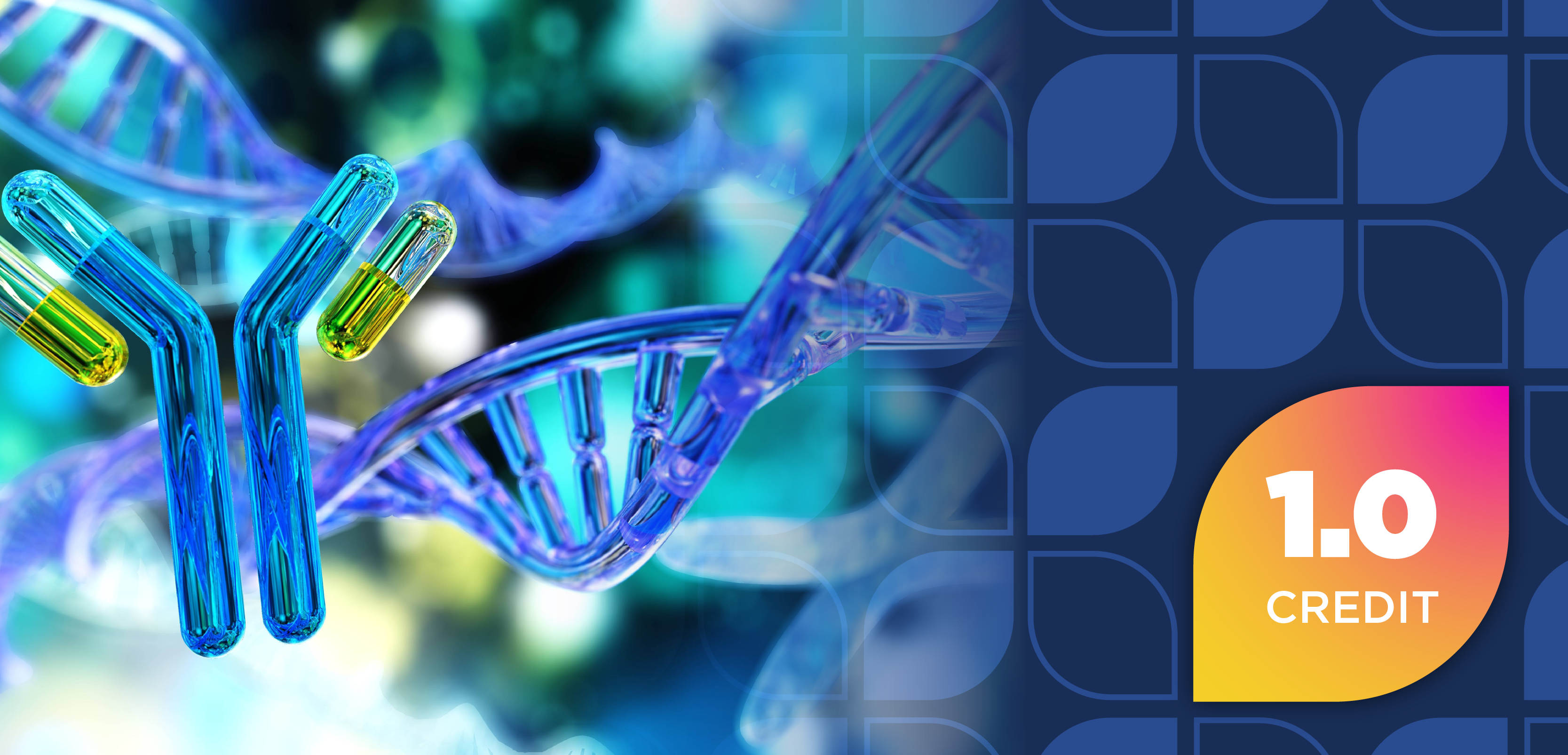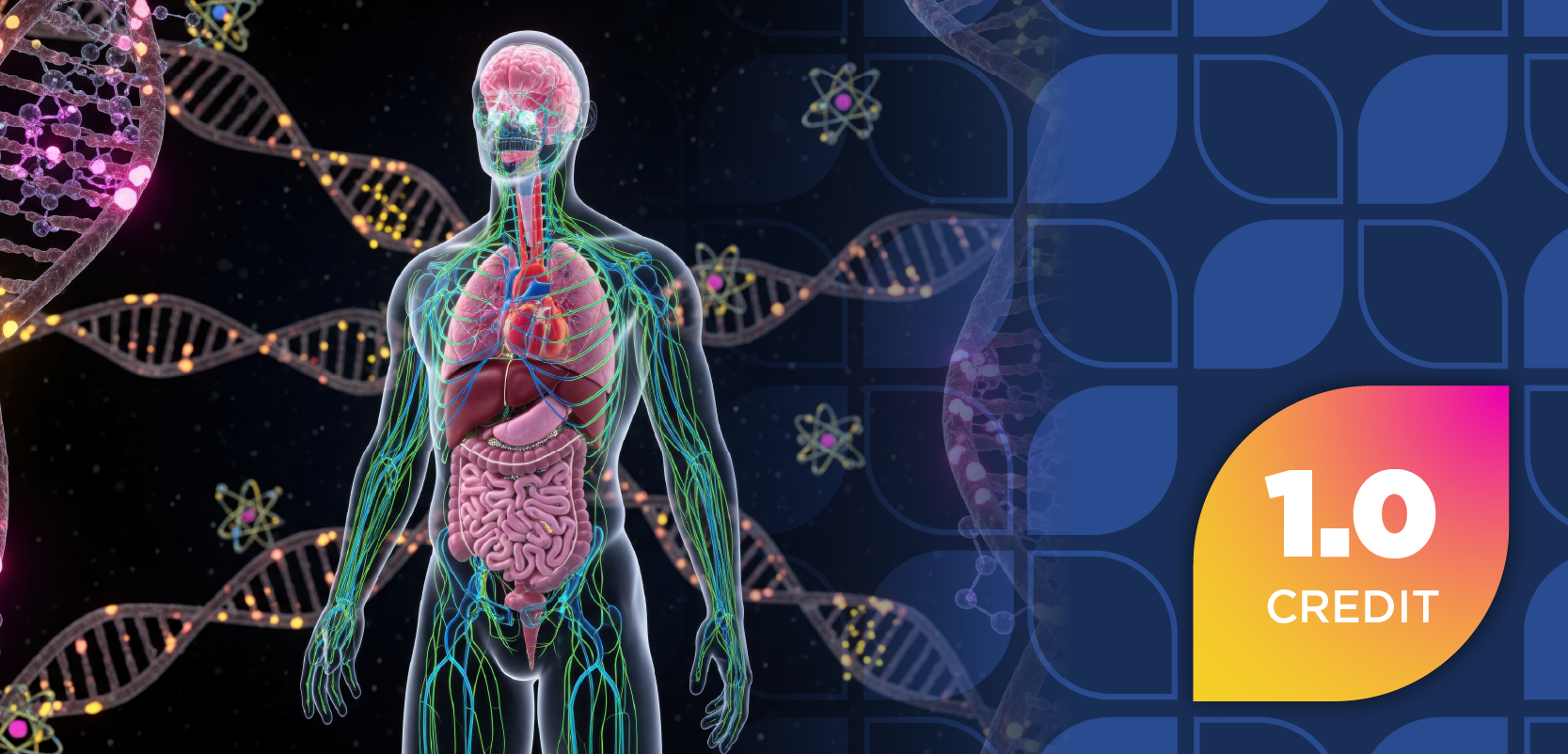
Biological Therapies for Cancer

Biological therapy involves the use of living organisms, substances derived from living organisms, or laboratory-produced versions of such substances to treat disease.
On This Page:
- What is biological therapy?
- What is the immune system?
- Can the immune system attack cancer?
- What types of biological therapy are used to treat cancer?
- What are the side effects of biological therapies?
- What is the ongoing research on cancer immunotherapy?
- Where can I find information about clinical trials of immunotherapies?
What is biological therapy?
Biological therapy involves the use of living organisms, substances derived from living organisms, or laboratory-produced versions of such substances to treat disease. Some biological therapies for cancer stimulate the body’s immune system to act against cancer
For patients with cancer, biological therapies may be used to treat the cancer itself or the
What is the immune system?
The
White blood cells , orleukocytes , play the main role inimmune responses . These cells carry out the many tasks required to protect the body against disease-causing microbes and abnormal cells.- Some types of leukocytes patrol the circulatory system, seeking foreign invaders, such as microbes and pathogens, and diseased, damaged, or dead cells. These white blood cells provide a general—or nonspecific—type of immune protection.
- Other types of leukocytes, known as
lymphocytes , provide targeted protection against specific threats, whether from a specific microbe or a diseased or abnormal cell. The most important groups of lymphocytes responsible for these specific immune responses areB cells andT cells .- B cells make
antibodies , which are large, secreted proteins that bind to and help destroy foreign invaders or abnormal cells. Killer T cells , which are also known as cytotoxic T cells, kill infected or abnormal cells by releasing toxic chemicals or by prompting the cells to self-destruct (in a process known asapoptosis ).
- B cells make
- Other types of lymphocytes and leukocytes play supporting roles to ensure that B cells and killer T cells do their jobs effectively. These supporting cells include
helper T cells anddendritic cells , which help activate both B cells and killer T cells and enable them to respond to specific threats from a microbe or a diseased or abnormal cell.
Can the immune system attack cancer?
The natural ability of the
However, cancer cells have various ways to evade detection and destruction by the immune system. For example, cancer cells can:
- Undergo
genetic changes that cause them to reduce the expression of tumorantigens on their surface, making them less “visible” to the immune system - Have proteins on their surface that inactivate immune cells
- Induce normal cells around the tumor (i.e, in the
tumor microenvironment ) to release substances that suppress immune responses and that promote tumorcell proliferation and survival.
What types of biological therapy are used to treat cancer?
Several types of biological therapies, especially
Immune Checkpoint Inhibitors
How they work: This type of immunotherapy releases a “brake” on the
Two widely studied immune checkpoint proteins are
Drugs called
How they are used: Immune checkpoint inhibitors are approved to treat a variety of cancer types, including
Immune Cell Therapy (also called Adoptive Cell Therapy or Adoptive Immunotherapy)
How it works: This approach makes a patient’s own
- Tumor-infiltrating lymphocytes (or TILs). This approach uses T cells that are naturally found in a patient’s tumor, called
tumor-infiltrating lymphocytes (TILs). TILs that best recognize the patient's tumor cells in laboratory tests are selected, and these cells are grown to large numbers in the laboratory. The cells are then activated by treatment with immune system signaling proteins calledcytokines and infused into the patient’s bloodstream.
The idea behind this approach is that the TILs have already shown the ability to target tumor cells, but there may not be enough of them in thetumor microenvironment to kill the tumor or to overcome the immune suppressive signals that the tumor is releasing. Introducing massive amounts of activated TILs can help to overcome these barriers. CAR T-cell therapy . This approach is similar, but the patient’s T cells aregenetically modified in the laboratory to express a protein known as achimeric antigen receptor , or CAR, before they are grown and infused into the patient. CARs are modified forms of a protein called aT-cell receptor , which is expressed on the surface of T cells. The CARs are designed to allow the T cells to attach to specific proteins on the surface of the patient’s cancer cells, improving their ability to attack the cancer cells.
Before receiving the expanded T cells, patients also undergo a procedure called lymphodepletion, which consists of a round of chemotherapy and, in some cases, whole-body radiation. The lymphodepletion gets rid of other immune cells that can impede the effectiveness of the incoming T cells.
How it is used: Adoptive T-cell transfer was first studied for the treatment of metastatic melanoma because melanomas often cause a substantial immune response, with many TILs. The use of activated TILs has been effective for some patients with melanoma and has produced encouraging positive findings in other cancers (e.g.,
Two CAR T-cell therapies have been approved.
Therapeutic Antibodies
How they work: Therapeutic antibodies are antibodies made in the laboratory that are designed to destroy cancer cells. They are a type of targeted cancer therapy—drugs that are designed specifically to interact with and block a specific molecule (or “molecular target”) that is necessary for cancer cell growth. More information about
Therapeutic antibodies work in many different ways:
- They may both interfere with a key signaling process that promotes the growth of the cancer and alert the immune system to destroy cancer cells to which the antibody is attached.
Trastuzumab (Herceptin), which binds to a protein on some cancer cells calledHER2 , is an example. - Their binding to the target protein may directly cause cancer cells to undergo
apoptosis . Examples of this type of therapeutic antibody arerituximab (Rituxan®) andofatumumab (Arzerra®), both of which target a protein on the surface ofB lymphocytes calledCD20 . Similarly,alemtuzumab (Campath®), binds a protein on the surface of mature lymphocytes called CD52. - They may be linked to a toxic substance that kills cancer cells to which the antibody binds. The toxic substance can be a poison, such as a
bacterial toxin ; asmall-molecule drug ; a light-sensitive chemical (used in photoimmunotherapy); or aradioactive compound (used inradioimmunotherapy ). Antibodies of this type are sometimes calledantibody–drug conjugates (ADCs). Examples of ADCs used for cancer includeado-trastuzumab emtansine (Kadcyla®), which is taken up by and kills cancer cells that express HER2 on their surface, andbrentuximab vedotin (Adcetris®), which is taken up by and kills lymphoma cells that express CD30 on their surface. - They may bring activated T cells into close proximity to cancer cells. For example, the therapeutic antibody
blinatumomab (Blincyto®) binds to both CD19, a tumor-associated antigen that is overexpressed on the surface of leukemia cells, and CD3, aglycoprotein on the surface of T cells that is part of the T-cell receptor. Blinatumomab brings leukemia cells into contact with T cells, resulting in T-cell activation and a killer T-cell response against CD19-expressing leukemia cells.
Other immunotherapies combine other (non-antibody) immune system molecules and cancer-killing agents. For example,
How they are used: Many therapeutic antibodies have been approved to treat a wide variety of cancers.
Therapeutic Vaccines
How they work: Cancer treatment vaccines are designed to treat cancers that have already developed by strengthening the body’s natural defenses against the cancer. They are intended to delay or stop cancer cell growth; to cause tumor shrinkage; to prevent cancer from coming back; or to eliminate cancer cells that have not been killed by other forms of treatment.
The idea behind cancer treatment vaccines is that introducing one or more cancer antigens into the body will cause an immune response that ultimately kills the cancer cells.
Cancer treatment vaccines may be made from a patient’s own tumor cells (that is, they are customized so that they mount an immune response against features that are unique to a specific patient’s tumor), or they may be made from substances (antigens) that are produced by certain types of tumors (that is, they mount an immune response in any patient whose tumor produces the antigen).
The first FDA-approved
Antigen-presenting cells cultured with PAP-GM-CSF are the active component of sipuleucel-T. These cells are infused into the patient. Although the precise mechanism of action of sipuleucel-T is not known, it appears that the antigen-presenting cells that have taken up PAP-GM-CSF stimulate T cells of the immune system to kill tumor cells that express PAP.
The first FDA-approved
How they are used: Sipuleucel-T is used to treat prostate cancer that has
Immune-Modulating Agents
How they work: Immune-modulating agents enhance the body’s immune response against cancer. These agents include proteins that normally help regulate, or
- Cytokines. These signaling proteins are naturally produced by
white blood cells . They help mediate and fine-tune immune responses,inflammation , andhematopoiesis (new blood cell formation). Two types of cytokines are used to treat patients with cancer:interferons (INFs) andinterleukins (ILs). A third type, calledhematopoietic growth factors , is used to counteract some of the side effects of certain chemotherapy regimens.
Researchers have found that one type of INF, INF-alfa, can enhance a patient’s immune response to cancer cells by activating certain white blood cells, such asnatural killer cells and dendritic cells.1 INF-alfa may also inhibit the growth of cancer cells or promote their death.2,3
Researchers have identified more than a dozen ILs, including IL-2, which is also called T-cellgrowth factor . IL-2 is naturally produced by activated T cells. It increases the proliferation of white blood cells, including killer T cells and natural killer cells, leading to an enhanced anticancer immune response.4 IL-2 also facilitates the production of antibodies by B cells to further target cancer cells.
Hematopoietic growth factors are a special class of naturally occurring cytokines. They promote the growth of various blood cell populations that are depleted by chemotherapy. Erythropoietin stimulates red blood cell formation, and IL-11 increases platelet production. Granulocyte-macrophage colony-stimulating factor (GM-CSF) andgranulocyte colony-stimulating factor (G-CSF) both increase the number of white blood cells, reducing the risk of infections.
G-CSF and GM-CSF can also enhance the immune system’s specific anticancer responses by increasing the number of cancer-fighting T cells. Bacillus Calmette-Guérin (BCG). This weakened form of a live tuberculosis bacterium does not cause disease in humans. It was first used medically as a vaccine against tuberculosis. When inserted directly into the bladder with acatheter , BCG stimulates a general immune response that is directed not only against the foreign bacterium itself but also against bladder cancer cells. The exact mechanism this anticancer effect is not well understood, but the treatment is effective.- Immunomodulatory drugs (also called
biological response modifiers ). These drugs are strong modulators of the body’s immune system. They includethalidomide (Thalomid®);lenalidomide (Revlimid®) andpomalidomide (Pomalyst®), derivatives of thalidomide that have a similar structure and function; andimiquimod (Aldara®, Zyclara®). - It is not entirely clear how thalidomide and its two derivatives stimulate the immune system, but they promote the IL-2 secretion from cells and inhibit the ability of tumors to form new blood vessels to support their growth (a process called angiogenesis). Imiquimod is a cream that is applied to the skin. It causes cells to release cytokines, mainly INF-alpha, IL-6, and TNF-alpha (a molecule involved in inflammation).
How they are used: Most immune-modulating agents are used for treatment of
What are the side effects of biological therapies?
The side effects of biological therapies mainly reflect the stimulation of the immune system and can differ by the type of therapy and by how individual patients react to it.
Pain, swelling, soreness, redness, itchiness, and rash at the site of
Long-term side effects of immunotherapies (particularly immune checkpoint inhibitors) include
Potentially serious side effects of specific immunotherapies include:
Immune Checkpoint Inhibitors
- Organ-damaging immune-mediated reactions involving the digestive system, liver, skin, nervous system, and heart and in the hormone-producing glands. These reactions can cause immune-mediated
pneumonitis ,colitis ,hepatitis , nephritis and renal (kidney) dysfunction, myocarditis (inflammation of the heart muscle), andhypothyroidism andhyperthyroidism .
Immune Cell Therapy
Cytokine release syndrome (CAR T-cell therapy)Capillary leak syndrome (TIL therapy)
Therapeutic Antibodies and Other Immune System Molecules
- Cytokine release syndrome (blinatumomab)
- Infusion reactions, capillary leak syndrome, and loss of visual acuity (denileukin diftitox)
Therapeutic Vaccines
- Flu-like symptoms
- Severe allergic reaction
- Stroke (Sipuleucel-T)
Tumor lysis syndrome , herpes virus infection (T-VEC)
Immune System Modulators
- Flu-like symptoms, severe allergic reaction, lowered blood counts, changes in blood chemistry, organ damage (cytokines)
- Flu-like symptoms, severe allergic reaction, urinary side effects (BCG)
- Severe birth defects if taken during pregnancy, blood clots/venous
embolism ,neuropathy (thalidomide, lenalidomide, pomalidomide) - Skin reactions (imiquimod)
What is the ongoing research on cancer immunotherapy?
Researchers are focusing on several major areas to improve the effectiveness of cancer immunotherapy, including:
- Approaches to overcome resistance to cancer immunotherapy. Researchers are testing combinations of multiple immune checkpoint inhibitors, as well as immune checkpoint inhibitors in combination with a wide range of other immunotherapies, molecularly targeted cancer therapies, and
radiation therapy , as ways to overcome therapeutic resistance of tumors to immunotherapy.5,6 - Identification of
biomarkers that predict response to immunotherapy. Not everyone who receives immunotherapy will respond to the treatment. Identification of biomarkers that predict response is a major area of research.7,8 - Identification of novel cancer-associated antigens—so-called neoantigens—that may be more effective in stimulating immune responses than the already known antigens.9,10
- Noninvasive strategies to isolate neoantigen-expressing tumor-reactive immune cells.11
- Learning more about the mechanisms by which cancer cells evade or suppress anticancer immune responses. A better understanding of how cancer cells manipulate the immune system could lead to the development of drugs that block those processes.
- Near-infrared photoimmunotherapy. This approach uses infrared light to activate the targeted destruction of cancer cells in the body.12-14
Where can I find information about clinical trials of immunotherapies?
Both FDA-approved and experimental immunotherapies for specific types of cancer are being studied in
Alternatively, call NCI's Cancer Information Service at 1-800-4-CANCER (1-800-422-6237) for information about clinical trials of immunotherapies.
Selected References
- Sutlu T, Alici E. Natural killer cell-based immunotherapy in cancer: current insights and future prospects. Journal of Internal Medicine 2009; 266(2):154-181.
[PubMed Abstract] - Joshi S, Kaur S, Redig AJ, et al. Type I interferon (IFN)-dependent activation of Mnk1 and its role in the generation of growth inhibitory responses. Proceedings of the National Academy of Sciences U S A 2009; 106(29):12097-12102.
[PubMed Abstract] - Jonasch E, Haluska FG. Interferon in oncological practice: review of interferon biology, clinical applications, and toxicities. The Oncologist 2001; 6(1):34-55.
[PubMed Abstract] - Li Y, Liu S, Margolin K, et al. Summary of the primer on tumor immunology and the biological therapy of cancer. Journal of Translational Medicine 2009; 7:11.
[PubMed Abstract] - Grimaldi AM, Marincola FM, Ascierto PA. Single versus combination immunotherapy drug treatment in melanoma. Expert Opinion on Biological Therapy 2016; 16(4):433-441.
[PubMed Abstract] - Sharma P, Hu-Lieskovan S, Wargo JA, Ribas A. Primary, adaptive, and acquired resistance to cancer immunotherapy. Cell 2017; 168(4):707-723.
[PubMed Abstract] - Wu X, Giobbie-Hurder A, Liao X, et al. Angiopoietin-2 as a biomarker and target for immune checkpoint therapy. Cancer Immunology Research 2017; 5(1):17-28.
[PubMed Abstract] - Mouw KW, Goldberg MS, Konstantinopoulos PA, D'Andrea AD. DNA damage and repair biomarkers of immunotherapy response. Cancer Discovery 2017; 7(7): 675-693.
[PubMed Abstract] - Duan F, Duitama J, Al Seesi S, et al. Genomic and bioinformatic profiling of mutational neoepitopes reveals new rules to predict anticancer immunogenicity. Journal of Experimental Medicine 2014; 211(11):2231-2248.
[PubMed Abstract] - Kreiter S, Vormehr M, van de Roemer N, et al. Mutant MHC class II epitopes drive therapeutic immune responses to cancer. Nature 2015; 520(7549):692-696.
[PubMed Abstract] - Gros A, Parkhurst MR, Tran E, et al. Prospective identification of neoantigen-specific lymphocytes in the peripheral blood of melanoma patients. Nature Medicine 2016; 22(4):433-438.
[PubMed Abstract] - Nagaya T, Nakamura Y, Sato K, et al. Near infrared photoimmunotherapy with an anti-mesothelin antibody. Oncotarget 2016; 7(17):23361-23369.
[PubMed Abstract] - Ogawa M, Tomita Y, Nakamura Y, et al. Immunogenic cancer cell death selectively induced by near infrared photoimmunotherapy initiates host tumor immunity. Oncotarget 2017; 8(6):10425-10436.
[PubMed Abstract] - Railkar R, Krane LS, Li QQ, et al. Epidermal growth factor receptor (EGFR)-targeted photoimmunotherapy (PIT) for the treatment of EGFR-expressing bladder cancer. Molecular Cancer Therapeutics 2017; 16(10):2201-2214.
[PubMed Abstract]
Related Resources
Newsletter
Stay informed on drug updates, treatment guidelines, and pharmacy practice trends—subscribe to Pharmacy Times for weekly clinical insights.



































































































































































































